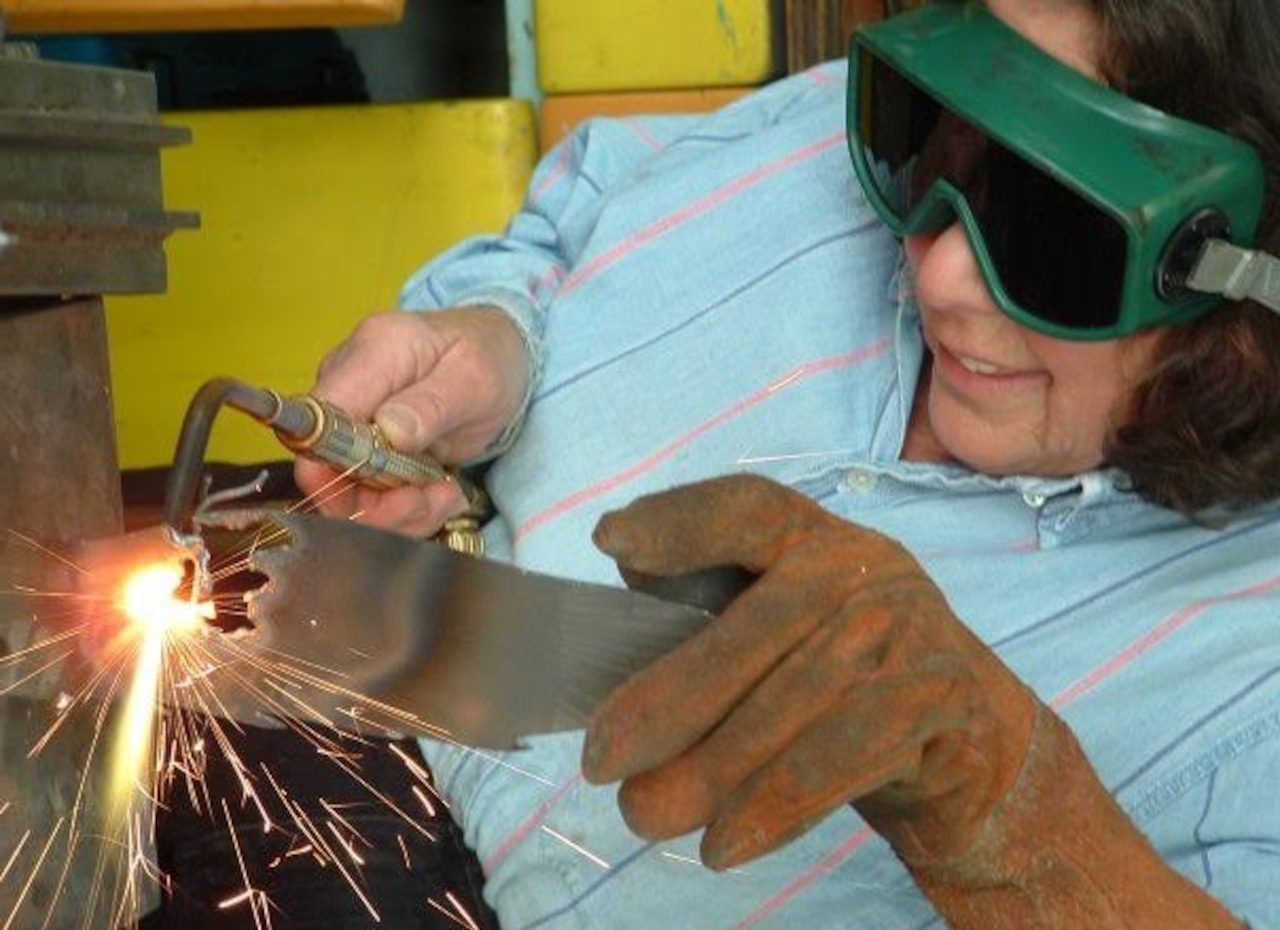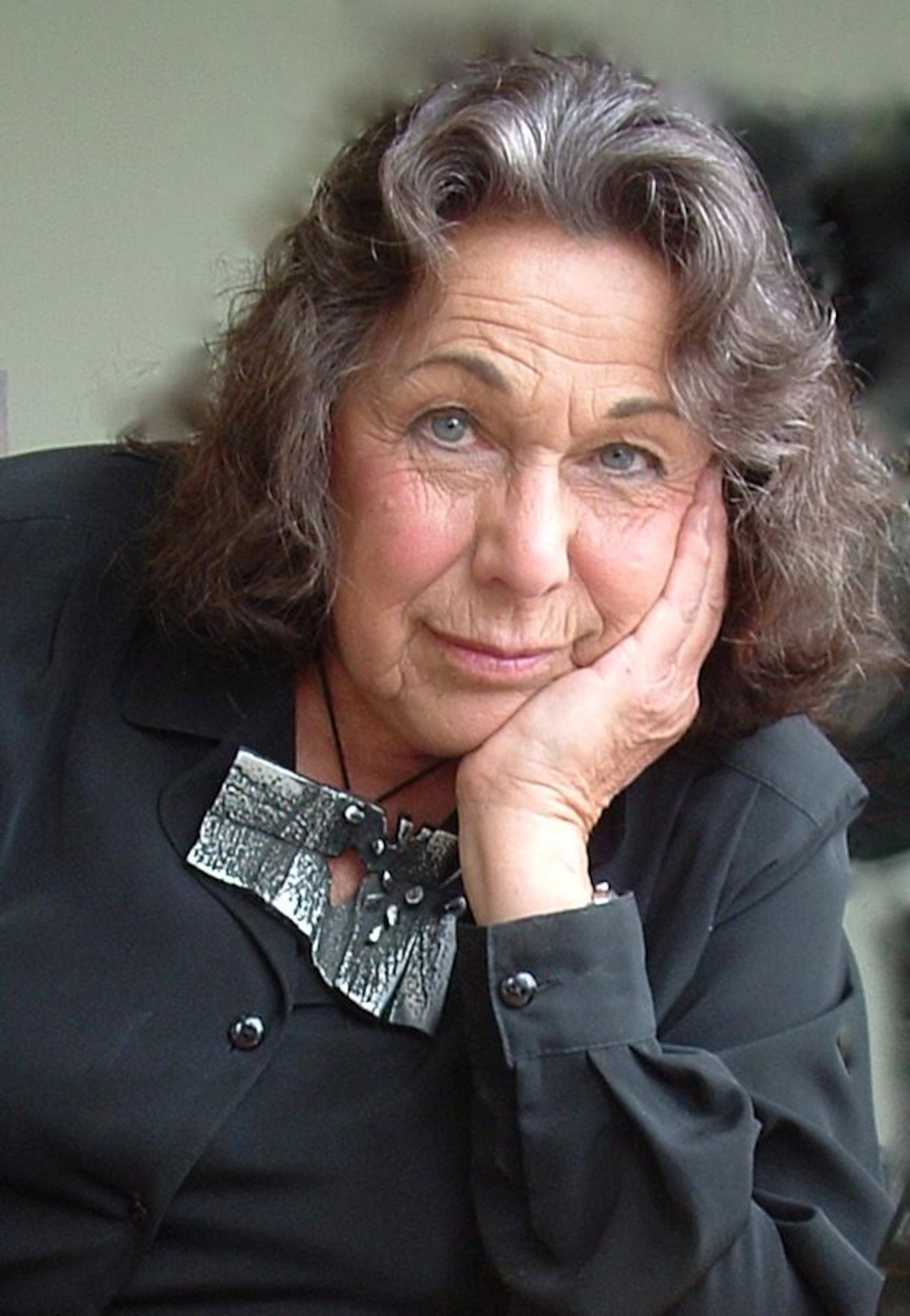When Arlene Abend’s daughter, Tema, had to take a home economics class in junior high school, Abend wasn’t surprised.
Her daughter wanted to take a shop class instead. Abend fought with the school to allow her daughter to be the first female student to take a shop class. She was victorious.
“She was extraordinarily frustrated with what men could do and women can’t,” said her daughter, Tema Abend. “She was a pioneer.”
It wasn’t the first or last time Abend would take a stand for feminism. As an artist who worked with metal and resin, who welded and even built her own tools when commercial tools wouldn’t suffice, Abend paved the way for women in the arts.
The renowned artist, sculptor and welder died this month. She was 94.
Abend’s sculptures ranged from the figurative to the abstract, from the small-scale to the large. She often worked with the human form.
“Her pieces are very theatrical,” said her friend, Cheryl Chappell, owner of Edgewood Gallery.
Born in 1931 in Brooklyn, Abend grew up on Brighton Beach. Her parents, Estelle and Louis Achiron, were conservative Jews. She had an older sister, Rita.
“She was a tomboy,” Tema Abend said. “Her sister, Rita, was gorgeous and had all the attention. My mother saw herself as the ugly duckling. She was the black sheep of the family.”
 Arlene Abendfamily archive
Arlene Abendfamily archive
As a girl, Abend loved going to the beach.
“I definitely loved the sand in my hands,” Arlene Abend, said in the documentary, “Stretching Boundaries: The Life and Work of Arlene Abend.” “I loved piling it up making it have different shapes. I loved the texture the warmth…I didn’t even realize I was doing sculpture.”
Abend, who stood at 5′2, had dark shoulder-length hair, and green-hazel eyes, attended Cooper Union in New York City. There, she met her husband, whom she later divorced.
The couple relocated to Connecticut and had two children. Abend made portraits using pastels and pencils. She designed book covers.
“I did portraits for an income but I found myself going further and further into that third dimension and the sense of space as opposed to imitating reality,” Arlene Abend said. “The painting faded. The need for color faded.”
The family moved to Syracuse in 1962, after her husband got a job at Smith Corona as a mechanical engineer helping to design typewriters.
While taking art courses at Syracuse University, Abend found her love for the welding torch. She decided to take classes at the old Central Tech Vocational Center to learn how to weld and start experimenting with using a welding torch to make sculptures.
 Arlene Abend used a welding torch to make sculptures. family archive
Arlene Abend used a welding torch to make sculptures. family archive
Abend juggled her desire to make art with the responsibilities of a housewife.
“I did all the prerequisites of a good Jewish mother,” she said. “I did all the right things as a suburban housewife and found myself terribly uncomfortable. It just wasn’t enough because that’s not the only person I was… The time to cook took away from the time that I could rush off when they went to school and get some work done.”
“Arlene was a feminist before feminism was in vogue,” Chappell said.
Her husband was ambivalent about the work Abend did.
“He did not support her efforts in her work but he was proud of her,” Tema Abend said.
At one point, Abend went on strike.
“She refused to do household duties for a week,” Tema Abend said. “She said ‘I’m not doing your laundry, your dishes, your dinners.’”
She wasn’t going to be the maid, housekeeper and cook while we all sat around and watched, Tema Abend said.
 Arlene Abendfamily archive
Arlene Abendfamily archive
Abend later enrolled at Syracuse University to finish her bachelor’s degree. There, she first started working with resin.
In 1973, she began leasing a studio at Delavan Center, where she would stay until it was destroyed by the Labor Day storm of 1998.
When she wasn’t making her own art, Abend put her welding ability to good use by repairing uniquely small and intricate metal antiques.
Abend often worked on commission.
“I love commission work because it has me create in context,” she said. “It has me pushing me in areas I probably wouldn’t have gone it and it gives me skills I wouldn’t have had.”
“I don’t have the finances to build to the scale that I would like so it’s my clients who have given me the opportunity to work a little bigger than I am and have the funds to make it happen.”
She was named a Post-Standard Woman of Achievement in 1989.
 Arlene Abendfamily archive
Arlene Abendfamily archive
She was commissioned to create a piece that sat on the 91st floor of the World Trade Center. It was destroyed on 9/11.
That day, Abend’s son, who was a pilot, was in the air flying for one of the major airlines.
“The fact that I lost my sculpture seemed to turn into something quite minor compared to what value a life has,” she said.
When the Carousel Center mall opened in 1990, Abend was commissioned to create enormous horses to be displayed there. She made a unicorn, a zebra, a racing horse, and a sea horse.
“What I got from the Carousel Mall and a deadline was a tremendous awareness that you could do it,” she said.
Abend had a process when making her large scale structures. She began with sketches, then made miniature models before creating the large pieces that were the end result.
Along with John Roberson, Abend designed the Dewitt 9/11 Memorial Monument.
“At first, I did this as a commission. Then when I got back to see it again, it was a whole symbol for so many people, that it became personal,” she said.
Arlene Abend shown among her sculptures on display at the Edgewood Gallery in Syracuse in 2004.Michelle Gabel
In 2007, Abend became the artist-in-residence at a preschool. She made sculptures that involved birds and flying.
“When you work with small children with their enthusiasm and their joy… I think I got as much out of it as the kids did.”
“She just always had to fight in order to get a seat at the table, but she was always very determined,” Chappell said. “She just kept on doing it, kept on insisting, kept on pushing, and she learned and she learned, and she did totally earn the respect of any man who would give her half a chance.”
“All the hassles, the difficulties, the lack of time or support, financial or emotional, was something to push against that made my muscles, my mental need, and desire probably stronger,” she said. “What a woman is or is not was not just a difficulty, it may have been an impetus for me where I am now. The frustration of wanting to push the envelope has not changed.”
Abend is survived by her children, Les and Tema Abend, and two grandchildren.
A celebration of Abend’s life will be held at Congregation Beth Shalom on the evening of February 25, 2026.
Sculptor and welder Arlene Abend cuts a steel rod in her workshop in 2016.John Berry
If you purchase a product or register for an account through a link on our site, we may receive compensation. By using this site, you consent to our User Agreement and agree that your clicks, interactions, and personal information may be collected, recorded, and/or stored by us and social media and other third-party partners in accordance with our Privacy Policy.
